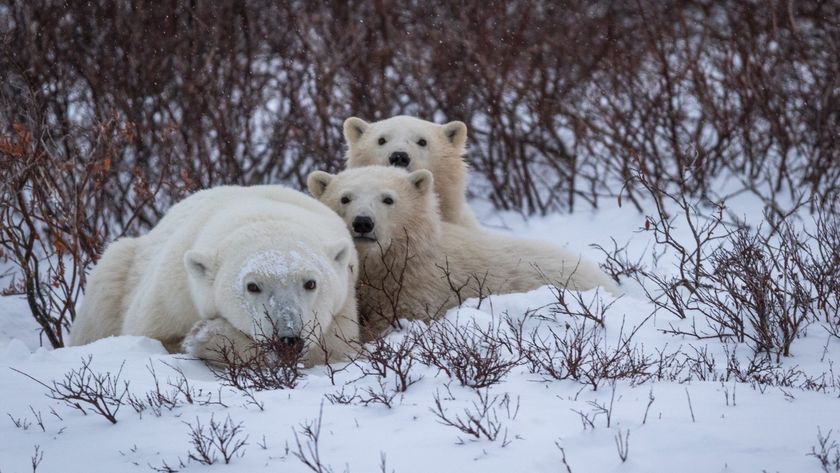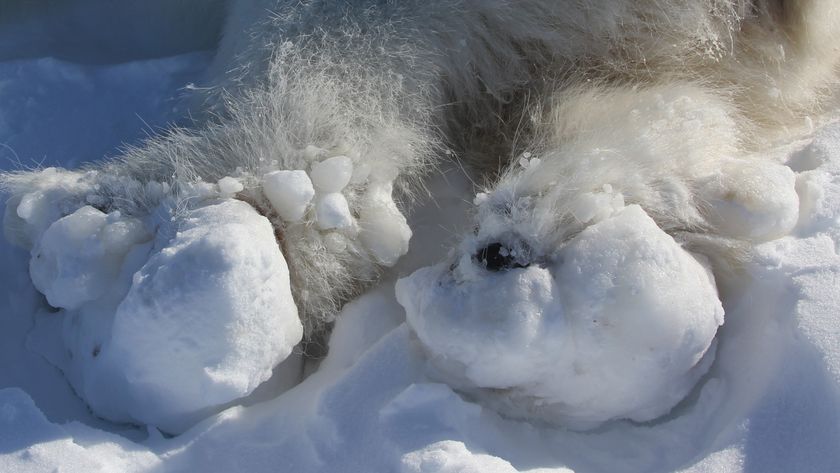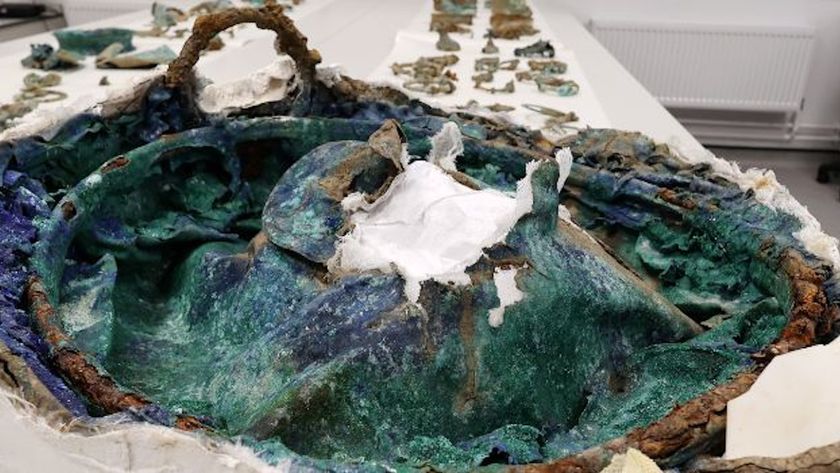No Picnic Safe: Smart Bears Use Tools
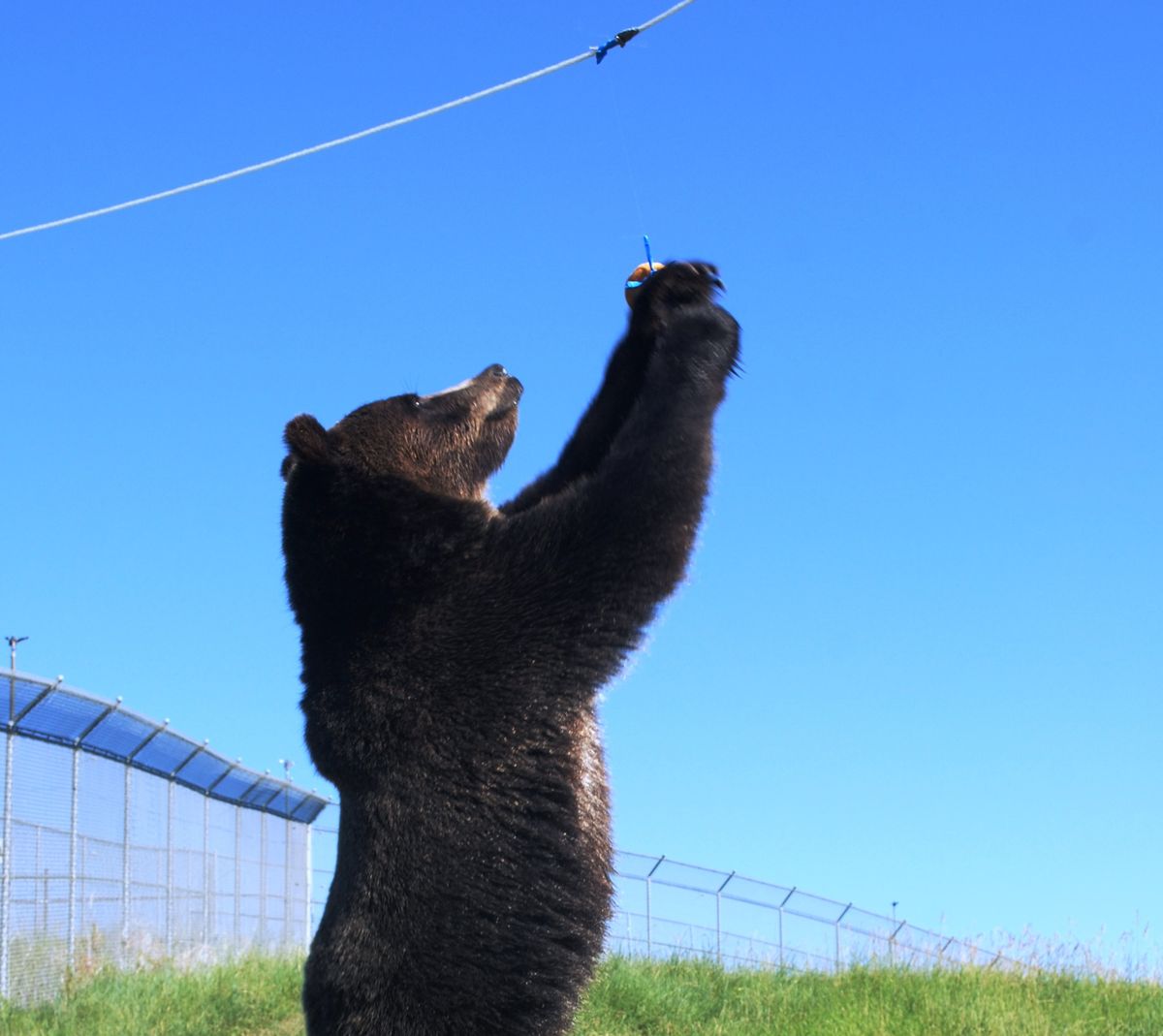
Despite their reputation as wily "pic-a-nic basket" nappers, it's brute force — not cleverness — that gets bears into coolers and trash bins.
But a new study may upend some assumptions about bear smarts.
In the just-completed study, bear experts at Washington State University in Pullman dangled doughnuts from a string, out of reach of grizzly bears. Six out of eight bears pushed stumps or plastic boxes across their play yard and placed these objects under the tasty treats, then boosted themselves up and pawed their prize. [Creative Creatures: 10 Animals That Use Tools]
This sort of tool use, though primitive, is evidence of creative problem-solving and cognitive-thinking skills, the researchers said.
"Cognition is really describing the part of the brain that actually thinks, rather than reacting based on instinct or emotion," said veterinarian Lynne Nelson, assistant director of the Washington State University (WSU) Bear Research Education and Conservation Center, who is overseeing the study. "In this case, it's thinking about solving a problem by manipulating an inanimate object."
Before trying to get the bears to "manipulate objects," as it's put in research jargon, researchers treated the animals to a doughnut on a string swaying over a stump. The pastries aren't a regular part of their diet, so the training helped the grizzlies make the mental connection between standing on the stump and a sweet reward.
"We had to get them to understand that they would be eating a doughnut from a string," Nelson told Live Science. "It was kind of funny — one bear was actually afraid of the doughnut. A doughnut in the air, that's so scary."
Sign up for the Live Science daily newsletter now
Get the world’s most fascinating discoveries delivered straight to your inbox.
Then, the researchers took away easy access and replaced the doughnut.
Of the five male and three female grizzly bears tested in the study, six were raised at the center and two were "problem bears" brought in from other locations. Only the six bears born at WSU passed the test, Nelson said. Some of these bears chose bulky items in their play yard to get the rare treat, such as a plastic box. One bear even tried to stack objects, she said.
"Their timing in getting this down has been very quick," Nelson said. "It has rivaled that of primates."
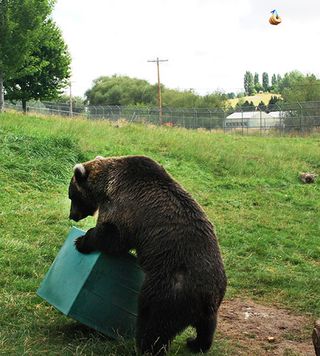
The other two bears, who were born in the wild, still have not made the connection between moving an object and reaching a doughnut, despite getting extra tries. It's too soon to know whether any differences between the two groups account for the washout, the researchers said.
Scientists have observed tool use in other bears, but have never studied it in a research setting before, Nelson said. Polar bears in zoos hurl objects, and a report surfaced in 2012 of a brown bear scratching its face with a barnacle-covered rock. That report inspired the recent study, Nelson said.
"Those of us who work with bears looked at that and thought, 'Wow, that's newsworthy?'," she said.
At the WSU bear center, the researchers have witnessed grizzlies manipulating objects, including using a single claw to try to open locks. (Back-scratching doesn't count, because picking up and using an object requires different thought processes than rubbing up against a tree or boulder.)
A wide variety of species other than humans make and manipulate tools, primarily for finding prey and retrieving food but also for play. Dolphins, birds, fish, elephants, and primates such as orangutans and chimpanzees all use tools.
Email Becky Oskin or follow her @beckyoskin. Follow us @livescience, Facebook & Google+. Original article on Live Science.

